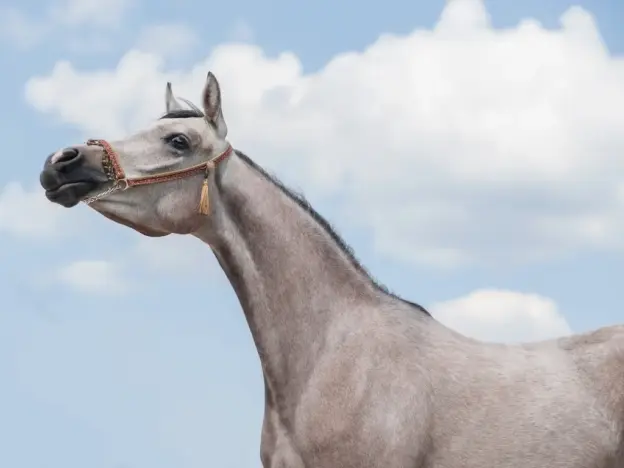Intro
Today most breeds owe some of their genetics to the Arabian horse. The beautiful and mighty Arabian is among the fountainheads of the World’s horse breeds. Displaying one of the most well-recognized profiles in the horse world, the Arabian’s physical loveliness is complimented by a hardy spirit and adaptable nature.
Origins
The breed is so old that its actual origin is unknown. Based on evidence, there are several theories. They may have originated as wild equines in Syria, Southern Turkey and Iraq, along the northern edge of the Fertile Crescent. Another theory suggests that they came from the Southwestern part of Arabia sometime around 2500 BC – where they have since been bred for thousands of years as war mounts.
It is also unclear when the first Arabian horse was domesticated or what they were used for. However by 1500 BC Arabian horses had not only been domesticated, but mastered by tribes of the area. These animals were the foundation for the Arabian horse of today.
Shaped by Religion and War
The prophet Mohammed was instrumental in bringing the Arabian to the rest of the world. He told his followers to cherish these animals and protect the mares who would continue to bear them. They were considered animals created by God and that good horsemanship would be rewarded in the afterlife.
Muslim conflicts in the 7th century AD continued to spread the breed’s influence outward. As nomads and warriors drifted further from home, they were forced to share scarce resources with their animals, creating deep bonds between man and animal. Until recent centuries, Bedouin tribes strictly maintained purity of the breed. Their vigilant breeding practices were the driving force behind the equine we know as today’s Arabian.
Enhancing Stock
As the breed spread, they shared their strong bloodlines with a variety of European breeds. As Christian Crusaders began to return from the East during the 12th and early 13th centuries, they brought the breed with them. The invention of the firearms also contributed to the breed’s popularity, as heavy knight’s horses were replaced with smaller, more agile cavalry mounts.
Modern Arabian
Late in the 17th and early in the 18th century, a revolution of horse breeding took place in Europe and Arabian animals laid the foundation for English Thoroughbreds. By the 19th century Arabian stud farms had been established throughout Europe, while their popularity spread quickly through Russia, Scandinavia and the U.S. Today they are one of the most popular breeds in America and their blood refines an enormous variety of breeds.
Features
Average height 14.1 – 15.1 hands
Built for speed and stamina, Arabians are quick and efficient.
Distinctive back shape
High set tail
Distinct 17 ribs, 5 lumbar vertebrae and 16 tail bone formation.
Physique
Head is wedge-shaped, dished and refined
Small muzzle with large nostrils
Big expressive eyes
Short curved ears
Neck is arched with a refined, clean throatlatch
Body is compact with short back
Tail is high set
Traditional Colors
Temperament
Spirited
Intelligent
Bold
Use
Enhancing other bloodlines
Racing
Pleasure
Showing
Helpful Links
* all links open in a new window
Emirates Arabian Horse Society
Arabian Horse Association
Arabian Horse Society of Australia
Canadian Arabian Horse Registry
Arab Horse Society of South Africa
New Zealand Arab Horse Breeders’ Society
Arabian Jockey Club
